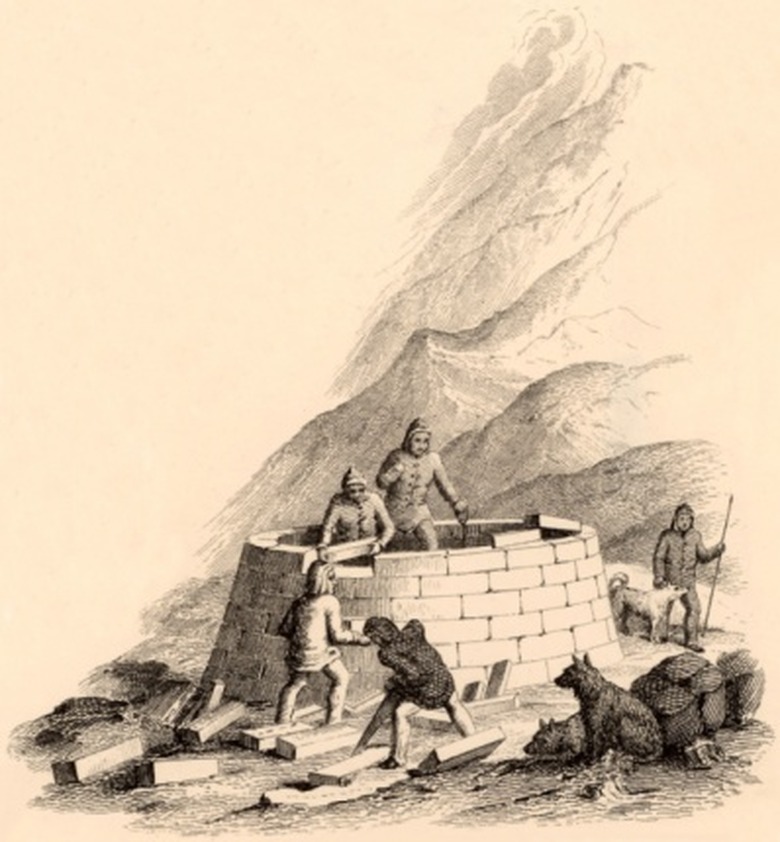Igloo Facts For Preschool
During a preschool thematic unit such as winter, Eskimos or the Arctic, the subject of igloos may be one you wish to include. This unconventional shelter should spark the interest of preschool-age students due to its shape and building materials. For a student of this age, stick to fun facts that engage his imagination. Keep the details limited to age-appropriate concepts such as shape, temperature and a few simple steps in the process of building one.
Building Materials
Building Materials
Explain to preschoolers that the igloo is made from just one material. Builders cut snow blocks from the ice and snow wherever a shelter was needed. Traditionally, builders cut the blocks of snow with a whale bone knife. Native Alaskans, or Inuits, built igloos as either temporary hunting shelters or seasonal homes. Two men could build one in just a couple of hours.
Shape
Shape
Describe the igloo shape to preschool students by comparing it to something familiar such as an ice cream-cone top. Builders make the domed igloo with a base of 6 feet to 15 feet in diameter. For preschoolers, compare the smaller-sized igloo to a rug or round table you might have in your room. Explain that the igloo might be built twice that size, too. If possible, bring in a small, domed tent to provide preschoolers with a visual showing the igloo shape. A picture of a domed tent might also help them to understand the size and shape of the igloo.
Steps
Steps
Assist preschoolers in understanding the process of creating an igloo by demonstrating with sugar cubes and salt dough. After leveling an area for the igloo, Inuits build it in a spiral from the ground up, slanting the blocks of ice toward the inside of the igloo so that a dome is created. Demonstrate this for preschoolers by creating a flat floor for the model from a circle of salt dough. Press sugar cubes into the dough, slanting them inward as you create the spiral. Press the first cube into the dough very deep and as you build the circle, lessen the depth you press them into the dough. By the time you circle around to the first cube, be sure the cube that meets the first one rests just on the top of the dough. The next cube should go on top of the very first cube. Adhere the sugar cubes on top of each other with salt dough, explaining that packed snow is used to fill in holes in igloo sides. Continue with the spiral shape of cubes and dough until the igloo dome is complete. This allows preschoolers to understand the igloo building process.
Interior
Interior
Preschoolers naturally assume that the inside of an igloo built of ice must be freezing cold. Explain that the thick ice blocks keep out the wind and cold so that the temperature stays above freezing inside. Because the ice is thick, it melts very little from any inside heat sources. Also explain that Inuits often build igloos in groups with chambers, like halls in a home, connecting the igloos together.
Cite This Article
MLA
Stover, Elizabeth. "Igloo Facts For Preschool" sciencing.com, https://www.sciencing.com/igloo-preschool-8596100/. 24 April 2017.
APA
Stover, Elizabeth. (2017, April 24). Igloo Facts For Preschool. sciencing.com. Retrieved from https://www.sciencing.com/igloo-preschool-8596100/
Chicago
Stover, Elizabeth. Igloo Facts For Preschool last modified March 24, 2022. https://www.sciencing.com/igloo-preschool-8596100/
